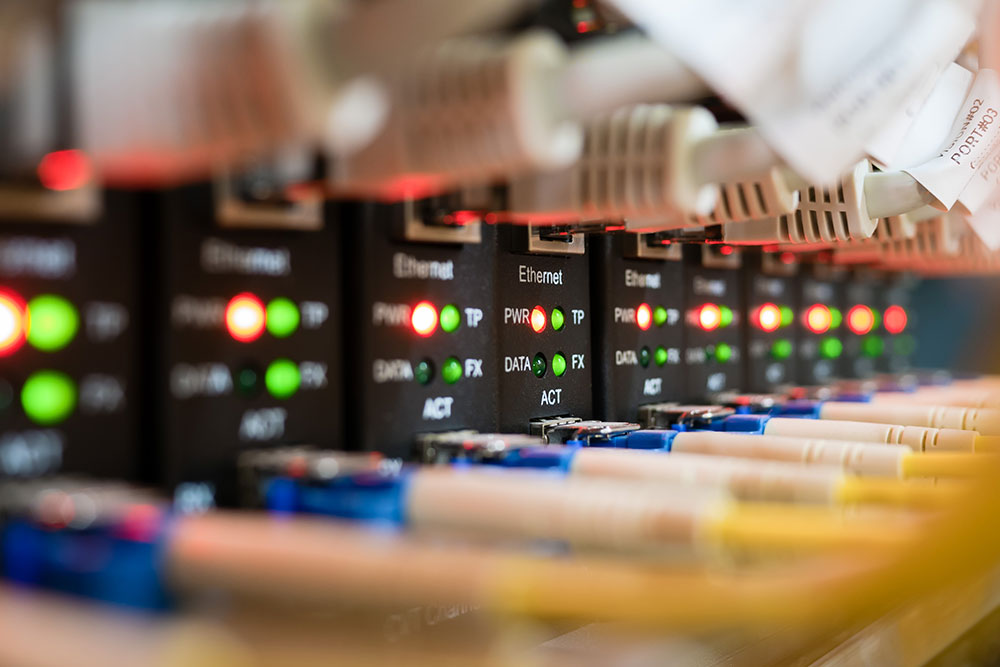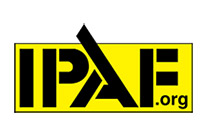11 common problems with your cabling network
30th May 2022
Network failures can be catastrophic, greatly diminishing productivity and sometimes leading to huge costs. While there are countless reasons why failures can happen, up to half of instances involve a network’s cabling infrastructure. This post will explain some of the most common problems in a cabling network, ranging from minor, easy-to-fix hiccups to costly and extensive breakdowns.

Many of these problems are preventable, often arising through a lack of planning, improper installation, and poor cable management.
Most of the issues we mention apply to both copper and fibre cabling, but we’ll let you know when an issue only applies to one type of cable.
Let’s have a look at them...
Loose connections
We’ll start off with one that’s so simple and obvious, it’s sometimes overlooked as people jump to more dramatic conclusions.
Often, a cable connection may have been accidentally unplugged or knocked loose. Simply plugging it back in will restore connectivity.
Physical damage
Cables can be damaged during the installation and at any time afterwards.
Improper care taken during installation, such as dropping the cables, fixing cable ties too tightly or bending the cables sharply can cause breakages which reduce their capability.
Also, if care is not taken to lay cables in safe areas with proper protection, they’re at risk of damage from being stepped on or furniture placed on them.
Environmental factors such as water infiltration and overheating can also damage cables. It’s also been known for small animals to cause breakages when they gnaw through cables.
Ignoring cable requirements
The different types of cable and their various categories have very strict requirements which, if not adhered to, can lead to problems with connectivity.
Two of the most common examples of this problem are using cables that are too long and ignoring the minimum bend radius on fibre cables.
Maximum cable length exceeded
Each cable has a maximum length at which it can work effectively. For example, copper Ethernet cables have a maximum distance of 100m for a single run. OM4 grade multi-mode fibre cables can reach a maximum of 550m at 10Gbs bandwidth, dropping to 150m at 40Gbs bandwidth.
If these maximums are exceeded, the signal deteriorates to a point where serious loss of transmission can occur.
Minimum bend radius exceeded (fibre)
All fibre cables have a minimum bend radius (usually different ones for whether they’re being pulled or stored), which depends upon a number of factors such as its size and the type of shielding it has.
When a fibre cable is bent more tightly than its specified bend radius, the strain upon the fibres inhibits the signal within. Also, excessive bending can cause kinks in the cable that damage the fibres.
Proper care must be taken to stay within the requirements specified by the manufacturer.
Dirty cable connections (fibre)
The core of an optical fibre is smaller than a human hair. Any microscopic contaminant such as a speck of dust or oil from skin can completely obscure the fibre’s end face and block transmission.
That’s why effective fibre cleaning is an essential part of the installation process.
Outdated or low-grade cables
As many organisations increase their reliance on the internet and move towards higher bandwidths, they may find that their existing network cabling is insufficient.
This could be because lower-grade cables were used to try and cut costs during installation, or simply because they were installed before newer, more capable cables were available.
For example, copper cabling below category 6a won’t be able to handle 10Gbs, while OM1and OM2 multi-mode fibre cables can’t deal with 40Gbs.
These cables would need to be replaced to accommodate the higher network requirements.
Lack of cable management
Cable management refers to the organisation of the cables, particularly in regards to the cables connecting to a main cabinet.
If you’ve ever seen a cabinet with cables that resemble a huge plate of spaghetti, you’ve seen a poor example of cable management. Neglecting this aspect of your cable network leads to a range of problems that can spiral out of control.
When cables are twisted and tangled, it can reduce the airflow around the equipment. This can lead to overheating that can reduce its performance and lead to higher bills.
Messy cables also mean that when a cable needs to be moved or replaced, it’s very likely to pull on other cables. This could cause their unintended disconnection and lead to outages across the network.
What’s more, maintenance work becomes much more challenging when cables are a disorganised mass. What should be a simple, routine fix could extend into a long and arduous process trying to identify the correct cables, costing your organisation time and money.
Mismatched cables
It’s also important to have an effective labelling system when there are lots of cables. Failure to do so can result in incompatible cables being connected, such as mixing single-mode and multi-mode fibre or using cables or connectors of different categories.
Even when cables are the same type and category, if they’re from different manufacturers they can have slight variations that could reduce their performance.
Proper planning and organisation will ensure full cable compatibility and increase the likelihood of optimum performance.
Cheap, inadequate equipment
It can be tempting to use cheaper options to cut costs in a network installation. However, this is a fatal error. If and when these sub-par components fail, the subsequent costs of fixing it will dwarf any initial savings made.
One example of cheap equipment that causes network deficiencies and failures is the use of copper-coated aluminium rather than pure copper. These cables are cheaper than copper but have much lower rates of transmission, greater vulnerability to crosstalk and are a fire hazard.
Another example is using cheap fibre connectors. The crucial part of a connector is the ferrule, the thin structure that holds and aligns an optical fibre. These should be made from ceramic and must be manufactured with extreme precision. Even microscopic misalignments can drastically reduce the transmission of light along the fibre and cause severe data loss.
Cheap connectors are at risk of poor construction and use cheaper materials such as plastic for the ferrule, reducing their performance, reliability and durability.
Interference (copper cables)
Poor planning and installation can expose copper cables in your network to interference.
Copper Ethernet cables should never run parallel to electrical power cables, as the electromagnetic field can distort the signal in the network cable causing disruption to the network. Similarly, electronic devices such as fluorescent lighting and AC units can also interfere with nearby copper cabling.
Structured cabling in areas at risk of interference need to have the appropriate shielding
Conclusion
While we haven’t covered everything that could could go wrong with your cabling network, you hopefully now have a better understanding of some of the more common problems.
Many of the problems are easily avoided when you invest in a professional installation. While it may be tempting to cut costs, the potential problems further down the line from poor network infrastructure often lead to much greater expense.
C-Tech Solutions’s experienced and accredited team ensure performance and reliability both now and in the future when they design, install and maintain your network.
We can also perform maintenance and support work when your existing network goes wrong.
Get in touch today to discuss your network needs.
To share this post please choose your platform!
Contact C-Tech Solutions
If you’re looking for an experienced and reliable partner with considerable expertise in network infrastructure, fibre-optics, copper cabling and all related building services then we invite you to reach out to our team.
See why a growing number of organisations trust C-Tech as their preferred supplier.






























